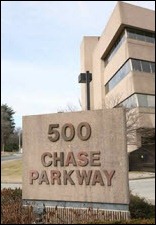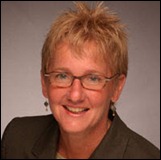The article about Pediatric Associates in CA has a nugget with a potentially outsized impact: the implication that VFC vaccines…
News 5/3/11
AMA and MGMA collaborate to develop an online directory of software vendors to help physicians determine what PM systems are compliant with the 5010 standard. The directory provides detailed vendor profiles that include installed customer base, target market, number of years the PM software has been offered, and affiliated EHR products.
Boston Business Journal ranks eClinicalWorks #13 on its 2011 Pacesetters list of fastest-growing private companies in Massachusetts, based on revenue growth.
Despite record bonuses in 2009, only about 21% of eligible providers participated in the PQRS program and only 12% earned bonuses. One possible reason for the low participation and qualification rates: information on final incentive payments comes about nine months after the reporting period ends. Because of the lack of timely feedback, physicians have inadequate time to correct issues for the following reporting year.
Loudoun Physicians for Women (VA) expands its use of Advanced Data Systems software to include MedicsDocAssistant EHR.
Peak Clinical Systems (CA) is certified to resell gloStream’s EMR and PM software.
The 14-provider Long Island Plastic Surgical Group (NY) selects NexTech’s EMR and PM software.
GE Centricity user Heart & Vascular Center of Arizona achieves Meaningful Use on April 18, the first day of the attestation period. Meanwhile, SuccessEHS client Mississippi Family Medicine successfully attests for Meaningful Use on April 26.
Neurosurgery, Orthopaedics & Spine Specialists (CT) contracts for the SRS EHR for its 33-provider practice.
No surprise here: specialists earn more than twice as much as primary care providers, according to a new WebMD report. Primary care physicians average $159,000, while orthopedic surgeons and radiologists earn about $350,000. Across all specialties, male physicians earn a average of $225,000 compared to $160,000 for females. However, women tend to spend fewer hours seeing patients and are not as well represented in the higher-earning specialties. Physicians in practices with more than 100 doctors earn a median $167, 000, compared to $144,000 for solo physicians.
The South Florida REC says over 1,000 doctors have committed to convert from paper to EMRs.
News sites, specifically those of WebMD and health magazines, are named trusted online healthcare resource in a consumer survey. Sixty-eight percent of Americans access online news site for health information, compared to 54% for user-generated content on sites like Facebook and Wikipedia. The US government is seen as the most credible source of information.
Rosemarie Nelson of the MGMA Health Care Consulting Group offers a list of nine Web sites being used by savvy medical practices. It’s an eclectic list that includes a password manager, e-training for software and technology, online appointment scheduling, and a credit card reader. Worth a look.
Amazing Charts says its EHR has been selected by four HIT RECs, including Alaska eHealth Network, eHealthConnecticut, Massachusetts e-Health Institute, and RI Regional Extension Center.
The American Academy of Pediatrics calls for the development and universal implementation of a electronic infrastructure to facilitate the pediatric information functions in the medical home model. Functions that AAP says should be included: timely and continuous tracking of health data over a patient’s lifetime; secure transfer of health data between providers; central coordination of health information among multiple repositories; translation of evidence into actionable decision support; and, reuse of archived clinical data for continuous quality improvement.
CMS updates its FAQ section on the EHR incentive program. Here are a couple of particularly good ones:
For the 2011 payment year, how and when will incentive payments be made?
For eligible professionals (EPs), incentive payments will be made approximately four to eight weeks after an EP successfully attests that they have demonstrated meaningful use of certified EHR technology. However, EPs will not receive incentive payments within that timeframe if they have not yet met the threshold for allowed charges for covered professional services furnished by the EP during the year. Payments will be held until the EP meets the $24,000 threshold in allowed charges for calendar year 2011 in order to maximize the amount of the EHR incentive payment they receive. If the EP has not met the $24,000 threshold in allowed charges by the end of calendar year 2011, CMS expects to issue an incentive payment for the EP in March 2012 (allowing 60 days after the end of the 2011 calendar year for all pending claims to be processed). Payments to Medicare EPs will be made to the taxpayer identification number selected at the time of registration, through the same channels their claims payments are made. The form of payment (electronic funds transfer or check) will be the same as claims payments.
To what attestation statements must an EP agree in order to submit an attestation, successfully demonstrate meaningful use, and receive an incentive payment?
Currently, the attestation process requires EPs to indicate that they agree with the following attestation statements:
- The information submitted for clinical quality measures (CQMs) was generated as output from an identified certified EHR technology
- The information submitted is accurate to the knowledge and belief of the EP or the person submitting on behalf of the EP
- The information is accurate and complete for numerators, denominators, exclusions, and measures applicable to the EP
- The information includes information on all patients to whom the measure applies.
CMS considers information to be accurate and complete for CQMs insofar as it is identical to the output that was generated from certified EHR technology. Numerator, denominator, and exclusion information for CQMs must be reported directly from information generated by certified EHR technology. By agreeing to the above statements, the EP is attesting that the information for CQMs entered into the Registration and Attestation System is identical to the information generated from certified EHR technology.






